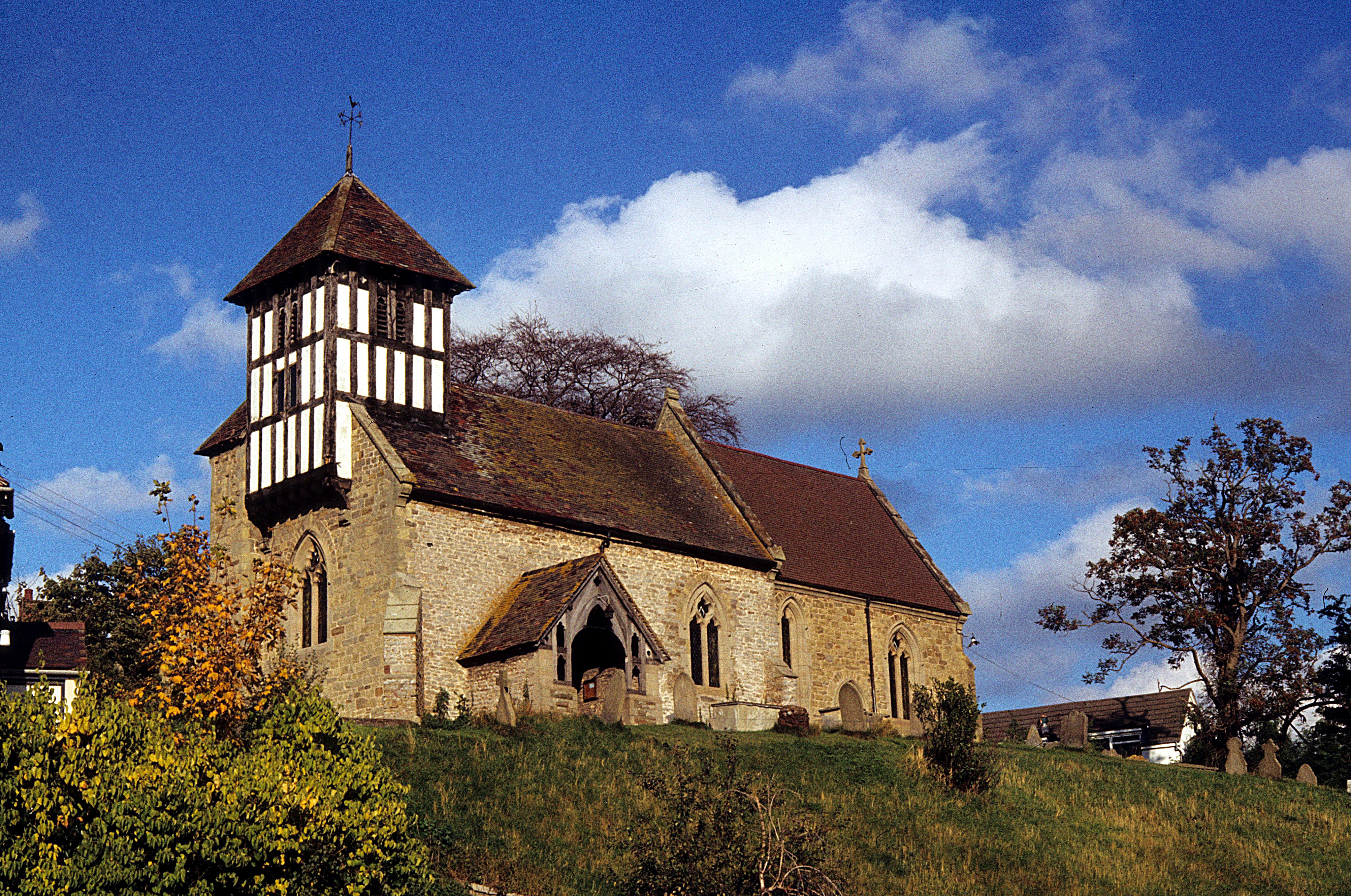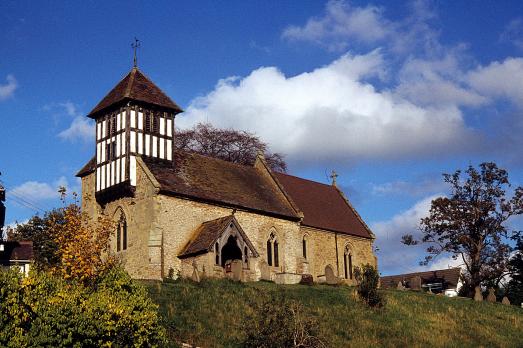The church sits on an elevated mount in the quiet village of Sheinton. The original church dates to Norman times and is constructed of stone, with a half timbered bell tower and an entrance porch rebuilt during the Victorian era.
The church boasts an overly large entrance door, prominent both for its construction with large cast iron studs and a small inner door, created using the porter’s door from Buildwas Abbey following the dissolution of the monasteries. Around the 1680s boxed pews were added together with a Jacobean pulpit. The pews were changed in the mid 1850s to a construction of a mixture of Victorian stained pine, and the panels of Jacobean carved wood used to decorate them are thought to come from the remnants of St Sampson’s Church, Cressage. The north aisle was built at the same time, and it was during this rebuild that a medieval effigy of a recumbent female figure, perhaps a child or a heart burial, was reputedly found in the wall of the chancel.
Behind the church are headstones commemorating the Revd Benjamin Bailey and his wife. Revd Bailey was Rector of Sheinton from 1856 until his death in 1871, and Rural Dean of Condover, Salop (1862-1871). He is best remembered for his work in Kerala, India between 1816 and 1850, where he established printing and book publishing in Malayalam, the native language of the region, and for his translation of the New Testament from Greek into Malaysian.
The churchyard features Georgian and Victorian tombstones. It is actively managed for wildlife, and has many wildflowers, resident slow worms, swallows, and butterflies.
The church is open every day as a place for quiet reflection and contemplation for locals and visitors alike. The visitor book shows that many people value the opportunity to come in and sit in the peaceful atmosphere.


